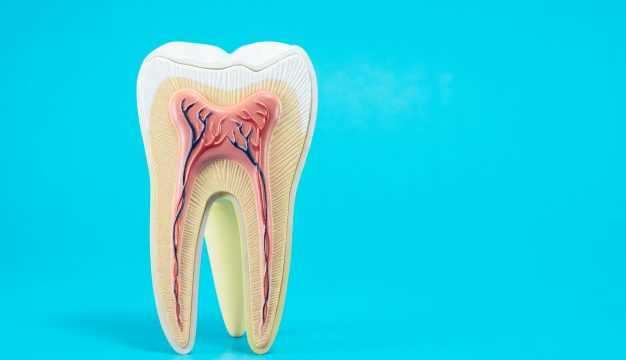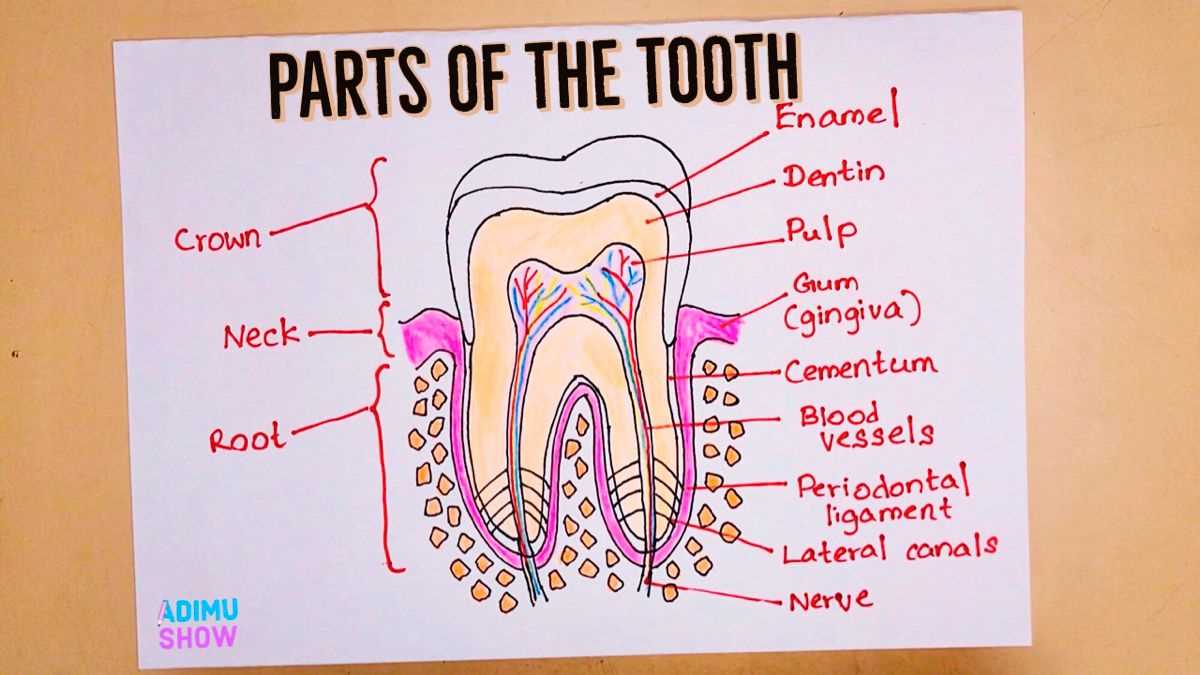
Exploring the intricate elements that constitute the fundamental framework of oral anatomy reveals a complex and fascinating system. Each section plays a crucial role in functionality, contributing to overall health and well-being.
The significance of these elements extends beyond mere structure; they are essential for various processes, including chewing, speaking, and maintaining facial aesthetics. Understanding these components allows for greater appreciation of their roles and the importance of dental care.
In this section, we will delve into the key features that make up this intricate system, highlighting their specific functions and interconnections. By grasping these essentials, individuals can better understand the necessity of proper dental hygiene and regular check-ups.
The structure of dental elements is crucial for comprehending their function and health. Each component plays a specific role in maintaining integrity and efficiency, contributing to overall well-being. Recognizing these elements aids in better oral hygiene practices and informed discussions with dental professionals.
Key Components of Dental Structure

The following table highlights the essential elements found in the composition of dental structures, along with their primary functions:
| Element | Function |
|---|---|
| Enamel | Provides a protective outer layer, shielding against decay and damage. |
| Dentin | Forms the bulk of the structure, offering support and sensitivity. |
| Pulp | Contains nerves and blood vessels, essential for nourishment and sensation. |
| Cementum | Secures the root to the surrounding bone, playing a role in stability. |
Importance of Understanding Dental Components

Familiarity with these structural elements is vital for recognizing signs of potential issues and ensuring timely interventions. This knowledge empowers individuals to take proactive steps in their dental care regimen.
Different Types of Teeth Explained
Understanding the various forms of dental structures is essential for grasping their roles in oral function and overall health. Each kind serves a distinct purpose, contributing to the process of chewing, speech, and maintaining facial aesthetics.
Incisors

Incisors are the sharp, flat front structures designed primarily for cutting food. They play a crucial role in the initial phase of mastication and are usually the first to make contact with what we eat.
Molars

Molars, located at the back of the mouth, are broad and flat, optimized for grinding and crushing food into smaller pieces. Their larger surface area allows for effective processing of a variety of textures, ensuring efficient digestion.
Layers of a Tooth Structure

The anatomy of dental formations consists of several distinct layers, each playing a crucial role in overall function and health. Understanding these layers helps in appreciating their contributions to resilience and sensitivity.
Key layers include:
- Enamel: The outermost layer, known for its hardness and protective qualities.
- Dentin: Located beneath the enamel, this layer provides structural support and sensitivity.
- Pulp: The innermost section, containing nerves and blood vessels, essential for nourishment and sensation.
These components work synergistically, ensuring the integrity and efficiency of dental structures throughout a person’s life.
Functions of Each Tooth Component

The various elements of a dental structure play essential roles in maintaining oral health and facilitating various functions. Each component contributes uniquely to the overall efficacy of the structure, ensuring both functionality and protection.
Enamel serves as the hard outer layer, providing durability and safeguarding the underlying materials from wear and decay. Its robust nature is vital for withstanding the forces of chewing.
Dentin, positioned beneath the enamel, offers additional support and is responsible for transmitting sensations, such as temperature changes and pressure. This layer is less dense than enamel but is crucial for the structural integrity of the entire unit.
Pulp is the soft center, containing nerves and blood vessels. It nourishes the structure and is essential for sensation, playing a key role in signaling discomfort or changes within the environment.
Cementum covers the root and aids in anchoring the structure within the jawbone. This protective layer assists in maintaining stability and allows for attachment to surrounding tissues.
Understanding the roles of these components enhances awareness of oral care practices and the importance of regular dental check-ups to preserve overall health.
Importance of Enamel Protection
The outermost layer of a dental structure serves as a crucial barrier against external threats. This protective covering plays a vital role in maintaining overall health, preventing damage, and ensuring longevity. Understanding the significance of safeguarding this layer is essential for effective oral care.
Key Benefits of Protection

- Prevention of Decay: A robust outer layer helps prevent the infiltration of harmful bacteria that can lead to decay.
- Resistance to Wear: The protective layer withstands the daily pressures of chewing and grinding, minimizing wear over time.
- Shielding Against Sensitivity: Proper maintenance prevents exposure of sensitive underlying structures, reducing discomfort.
Methods to Preserve the Protective Layer

- Regular Oral Hygiene: Consistent brushing and flossing remove plaque and food particles.
- Fluoride Treatments: Professional applications can strengthen the outer layer and enhance its resilience.
- Avoiding Harmful Substances: Limiting acidic foods and beverages reduces the risk of erosion.
Role of Dentin in Teeth

Dentin plays a crucial role in maintaining the overall structure and function of a dental unit. This mineralized tissue serves as a supportive layer, providing strength and resilience, while also contributing to the sensory functions of the structure.
Composition and Structure

This specialized tissue is primarily composed of organic materials and inorganic minerals, primarily hydroxyapatite. Its unique composition allows for:
- Flexibility, enabling it to withstand various forces.
- Effective transmission of sensory signals to the nervous system.
Protective Function
Beyond its structural support, this layer offers protective benefits by:
- Shielding the inner core from external threats, such as bacteria.
- Acting as a barrier against temperature fluctuations.
Overall, dentin is essential for both the durability and sensitivity of a dental unit, ensuring its longevity and functionality.
Impact of Pulp on Dental Health
The inner tissue of a dental structure plays a crucial role in maintaining overall oral wellness. This central area houses vital components that influence various aspects of health and functionality. Understanding its significance is essential for preserving not only the integrity of individual elements but also the entire system.
Key functions of this tissue include:
- Providing nourishment to surrounding structures
- Facilitating sensory responses to temperature and pressure
- Supporting immune defenses against infections
When the inner area becomes compromised, several issues may arise:
- Infection: Bacterial invasion can lead to severe complications.
- Pain: Sensitivity and discomfort may signal underlying problems.
- Structural Damage: Without proper care, surrounding areas can deteriorate.
Maintaining the health of this central tissue is vital for overall dental longevity. Regular check-ups and good hygiene practices are essential for ensuring its proper function and preventing adverse effects on general oral health.
Gums and Their Connection to Teeth
The supportive tissue surrounding the hard structures in the mouth plays a vital role in overall oral health. This soft tissue not only protects the underlying structures but also contributes to the stability and function of the hard components. Understanding this relationship is essential for maintaining a healthy oral environment.
The Role of Gums
This connective tissue acts as a barrier, preventing harmful bacteria from infiltrating deeper layers. Healthy soft tissue is crucial for providing the necessary support to the hard structures, ensuring they remain anchored and functional. Proper care and hygiene practices can significantly influence the condition of this essential tissue.
Impact on Overall Health
The condition of the supportive tissue can have far-reaching effects on overall wellness. Inflammation or disease in this area can lead to discomfort and affect the functionality of surrounding hard structures. Maintaining good health in this area is not only beneficial for oral function but also contributes to general well-being.
Common Tooth Disorders Overview
This section delves into prevalent ailments affecting dental structures, highlighting their causes, symptoms, and potential treatments. Understanding these issues is crucial for maintaining oral health and preventing more severe complications.
Cavities
Cavities, also known as caries, occur when harmful bacteria produce acids that erode enamel. Early signs may include sensitivity and visible discoloration. Treatment typically involves fillings to restore the affected area.
Gum Disease
This condition encompasses inflammation and infection of the supportive tissues surrounding the dental structures. Symptoms include swelling, bleeding, and recession of the gums. Professional cleaning and improved oral hygiene practices are essential for management.
Preventive Care for Healthy Teeth

Maintaining optimal oral health requires consistent attention to hygiene practices and lifestyle choices. By focusing on preventive measures, individuals can significantly reduce the risk of complications and ensure lasting wellness in their dental structure.
Daily Hygiene Practices
Implementing a routine of regular cleaning is essential. Brushing with a suitable paste and utilizing dental floss can effectively eliminate food particles and plaque, fostering a clean environment. It is advisable to perform these actions at least twice daily to maximize benefits.
Regular Check-ups
Visiting a dental professional for routine examinations is crucial. These assessments not only allow for the early detection of potential issues but also provide an opportunity for professional cleaning, which helps maintain optimal conditions. Such proactive measures can prevent more severe problems down the line.